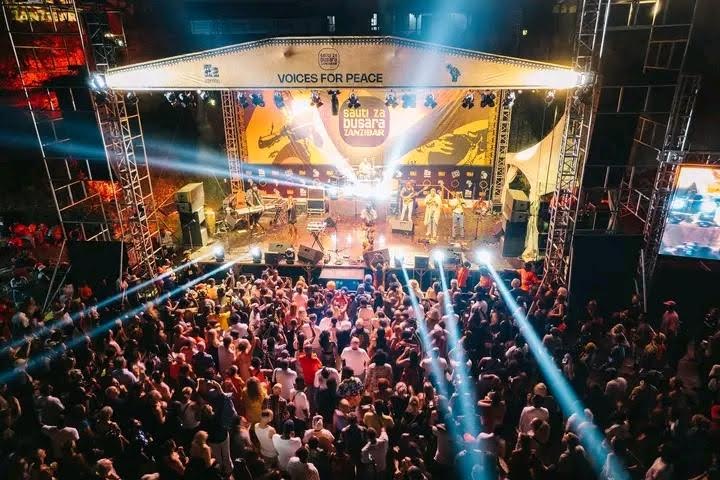Dala-Dala: Zanzibar’s iconic Public Transport

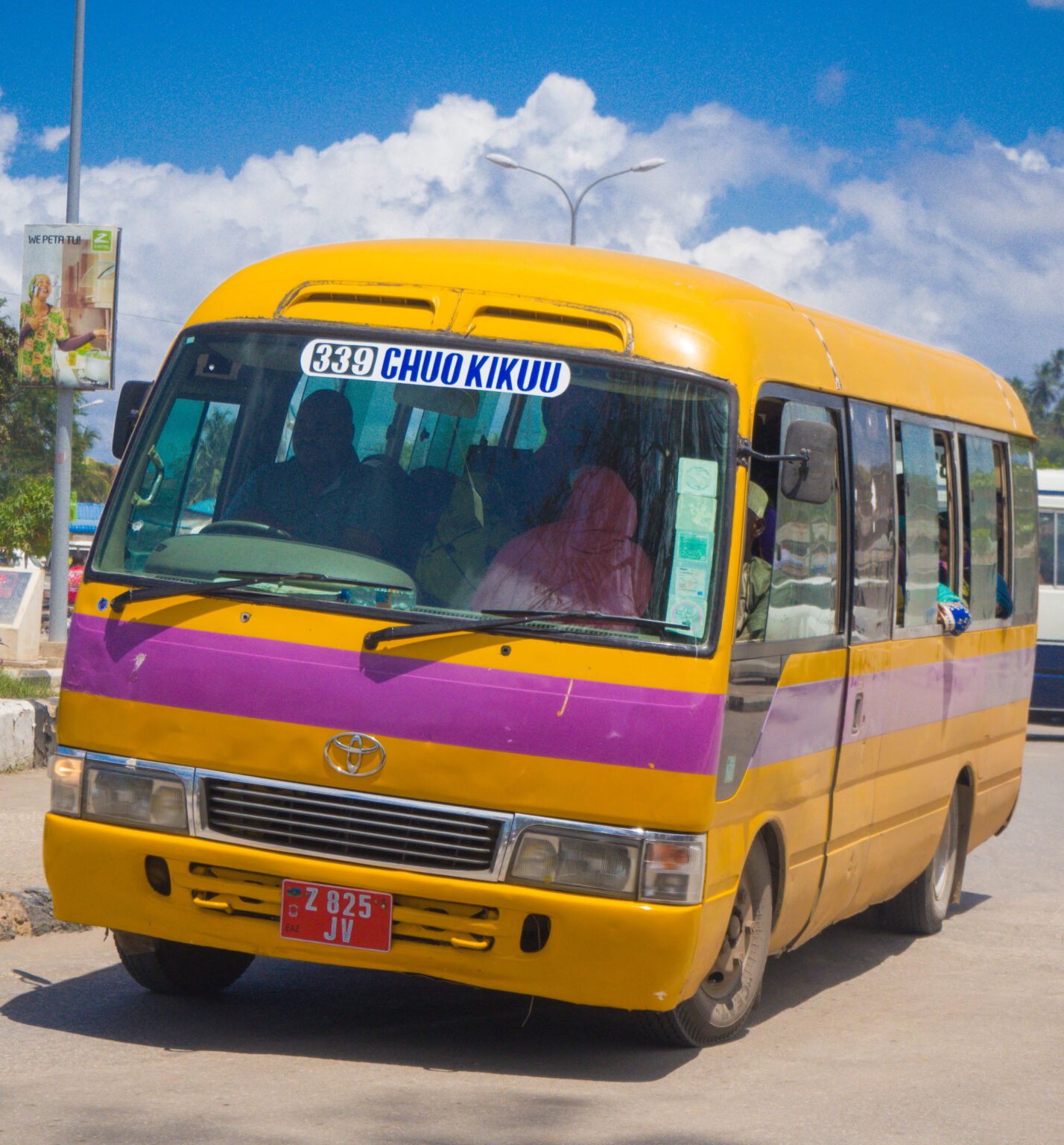
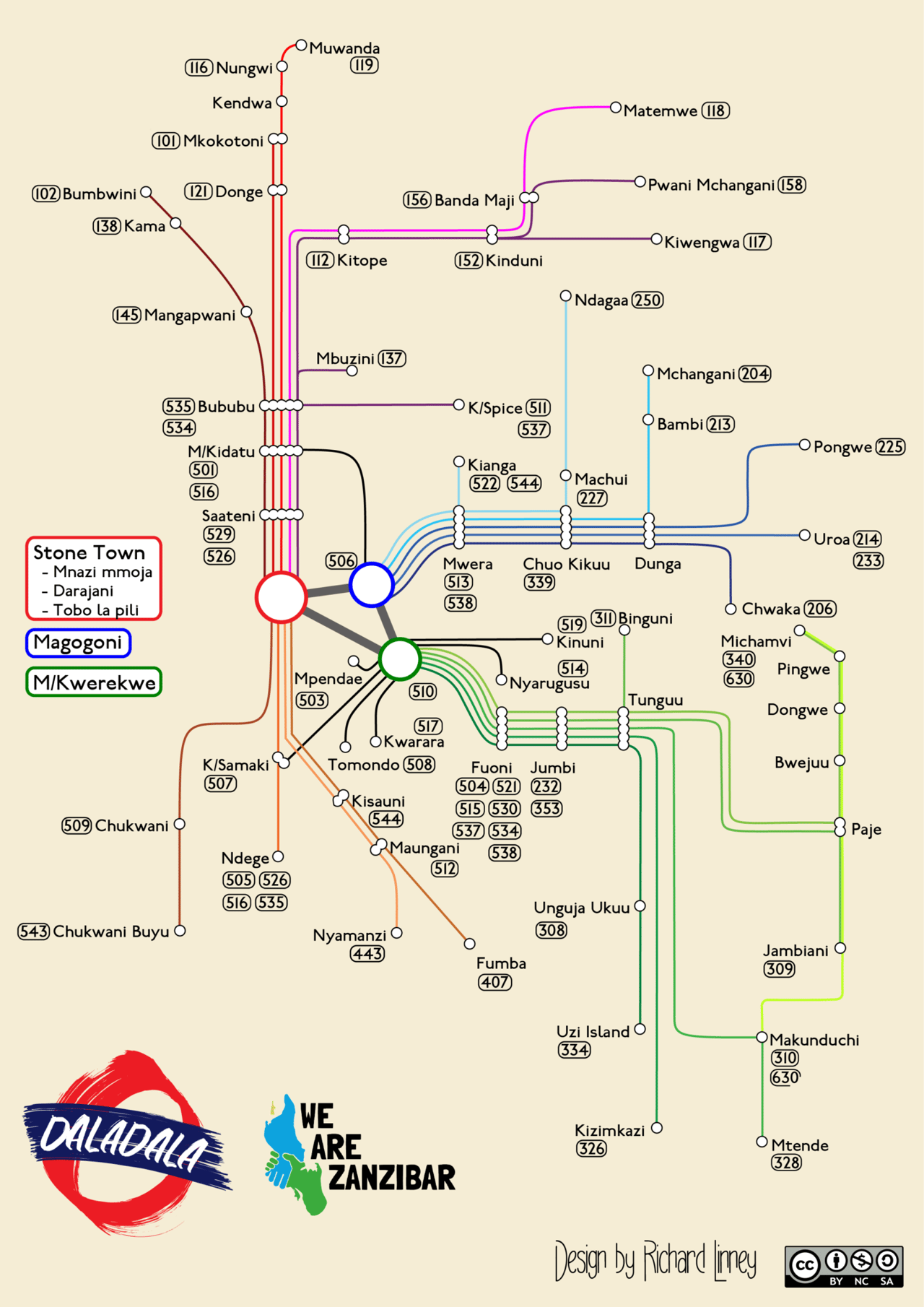
What is a Dala-Dala? Zanzibar's unique public minibus
In Zanzibar, the most iconic form of public transport is the Dala-Dala, often a Toyota Dyna truck converted into a shared minibus.
These vehicles are modified with two long benches running along the sides, a roof, a luggage rack on top, and roll-down heavy-duty blinds to provide protection from sun, rain, and wind.
If you’ve traveled in Southeast Asia, the Dala-Dala may remind you of Thailand’s Songthaew, a pickup truck adapted for passengers. Well, that’s a good comparison, except bigger!
This type of Dala-Dala continues to make up a large proportion of those on the road, but the number of modern minivans and minibusses seems to be increasing.

Who operates a Dala-Dala?
If you find yourself at one of the larger stops – for example, in Stone Town – it can be very daunting to know, amongst the noise and chaos, what exactly is going on.
The Dala-Dala team
Each Dala-Dala is run by a two-person team:
The Driver usually wears a blue shirt and is responsible for driving the vehicle (although I have seen occasions where the driver seems to be letting the conductor “have a go” at driving when not around busy areas or where police are known to be waiting).
The Conductor, often in a black shirt, stands on the back step, holding onto the sides or roof. He calls out destinations, collects fares, and looks out for passengers along the road.
Need to get off? Alert the conductor, he’s the one to tell.
No fixed stops or schedules
While there are designated stops at main locations, Dala-Dalas can be flagged down anywhere along their route. Don’t be discouraged if one passes you by — sometimes, even the "always room for one more" rule has its limits.
At starting points, the journey begins only when the conductor and driver agree that the vehicle is full — there’s no fixed timetable. This flexibility is part of what makes Dala-Dalas unique and unpredictable.
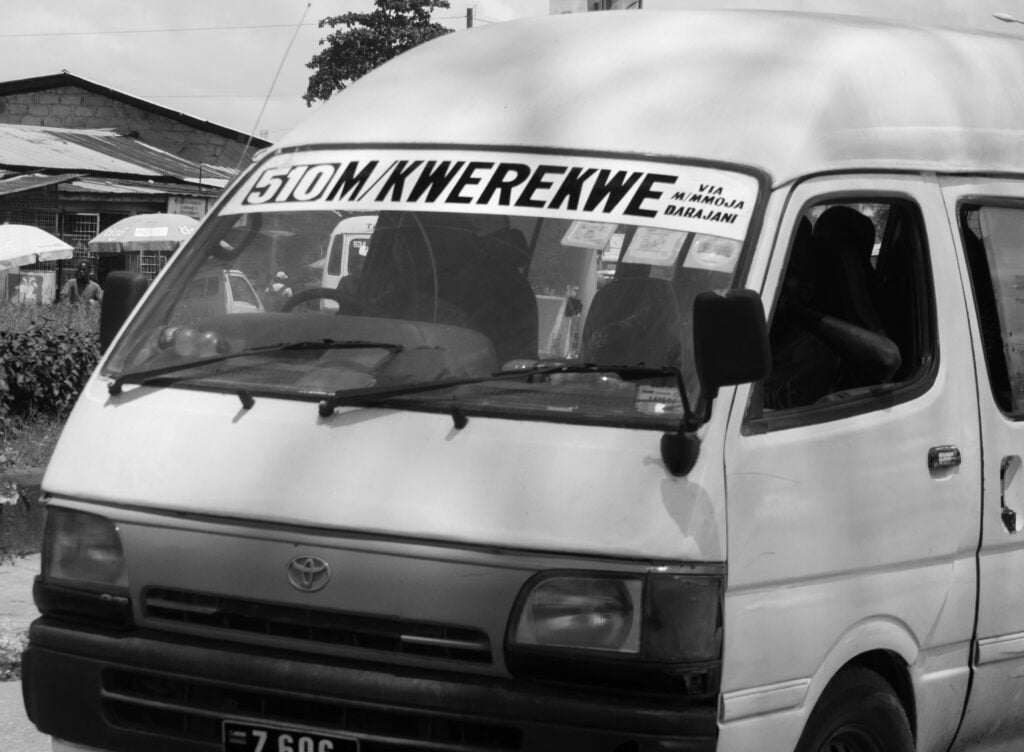
How much is this going to cost me? Dala-Dala prices
Compared to taxis, Dala-Dalas are of great value. Generally speaking, there are two fares – short and long – with a shorter journey (e.g., from the airport to Stone Town) costing 400tsh, and a longer journey (e.g., from Stone Town to Nungwi) costing 2500tsh. If you have luggage, you will have an additional charge. It’s important to note that the conductor will take your money during the journey, and not before the journey begins. It will be obvious when to pay during this adventure because the money will start being passed along from passenger to passenger until the conductor is in reach. If this hasn’t happened before it’s time for you to exit the Dala-Dala, then you simply pay the conductor as you leave.
Our top tip is to try and have smaller denomination notes or coins, and to not try paying a 400tsh fare with a 10,000tsh note – and I’m sure conductors all over the island agree!
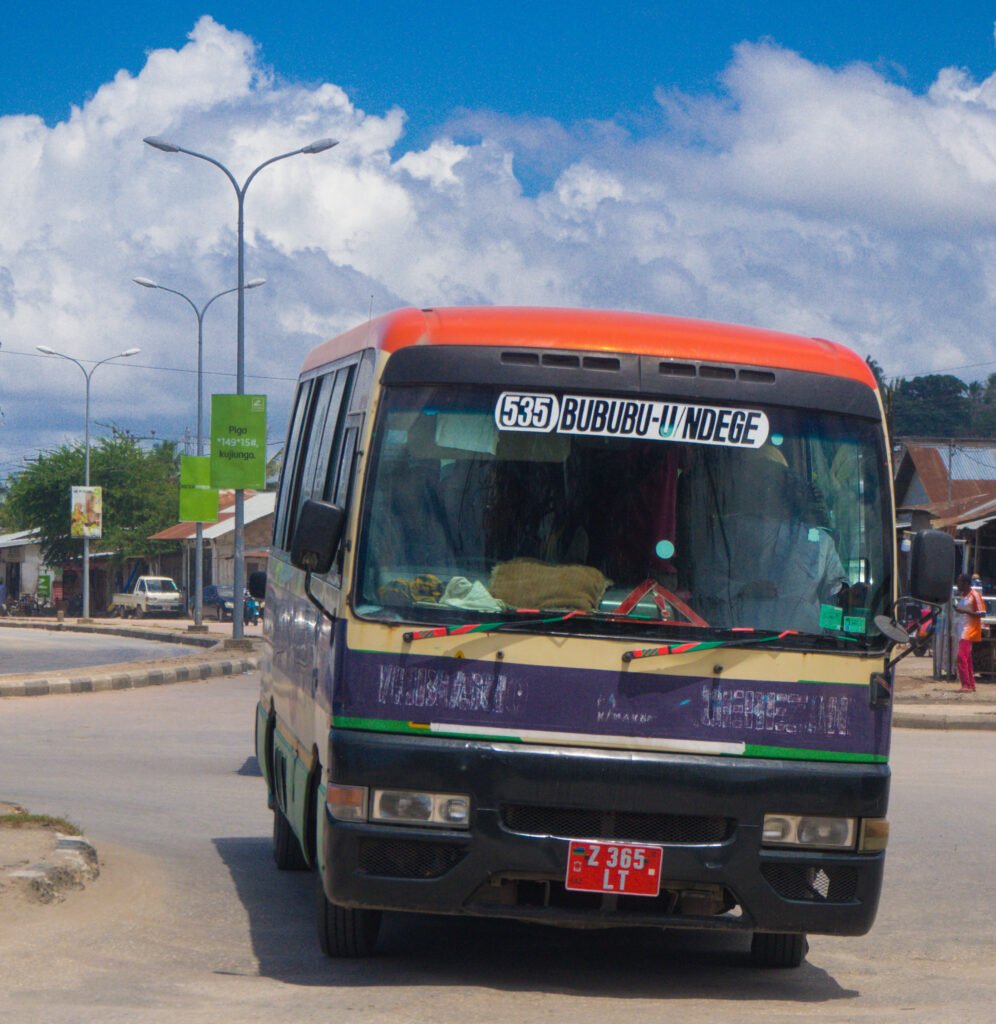
Dala-dala operating hours
Dala-Dalas generally begin operating at 6:00 am, although there are a couple of exceptions such as the route from Fumba that begins a little earlier at 5:45 am in order to reach the port for the first ferry of the day to the mainland. And for the main Nungwi route, I have been assured by Zanzibaris that this may as well be considered to be a 24-hour service – although obviously not as regular as the many vehicles running on this route during daylight hours.
Nungwi aside (as described above), Dala-Dalas finish their service at 7:30-8:00 pm, although again there is an exception, with the Kiembe Samaki (just before the airport) to Stone Town route running later into the evening until approximately 10:00 pm.
If you are in Zanzibar during the month of Ramadhan, it is very important to keep your eyes on the time. With Zanzibari Muslims breaking their fast just after sunset, you will struggle to find any Dala-Dala after 6:00 pm. Traveling by Dala-Dala around this time is also not for the faint-hearted – the driver will be driving somewhat faster than normal because he wants to get his last journey completed as quickly as possible so that he can go home and eat!
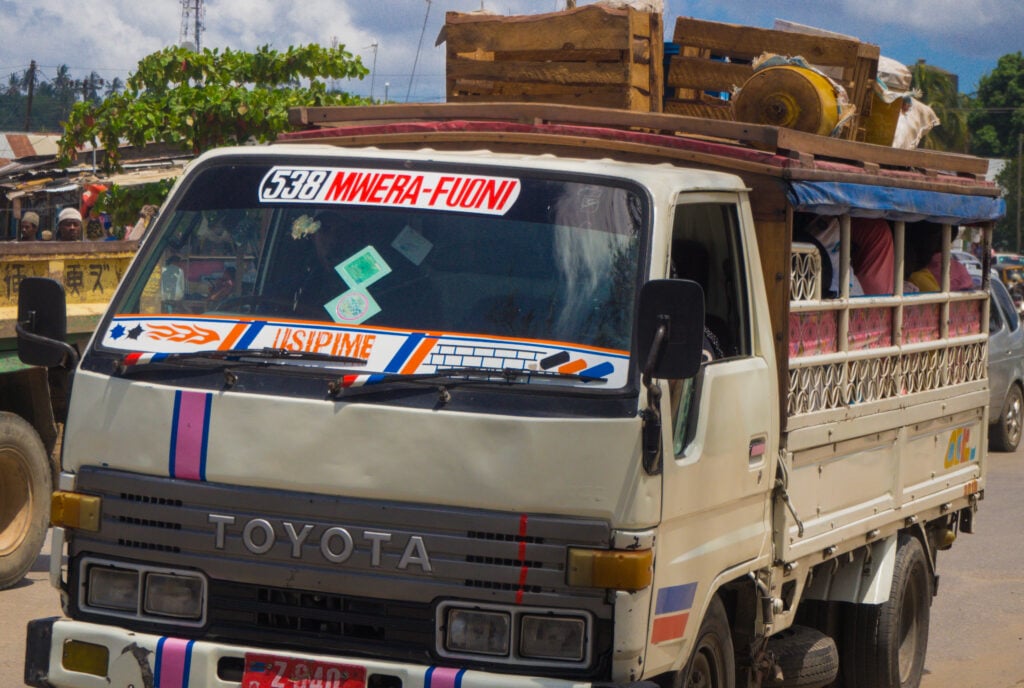
All roads lead to Stone Town? Main Dala-Dala routes
Most Dala-Dalas display their route number and destination names clearly on the front and back. Alongside these are shorthand notations like:
“M/M” for Mnazi Mmoja (the main hospital)
“D/J” or “D/Jani” for Darajani Market
These labels help passengers identify whether the Dala-Dala passes through key Stone Town stops. If you don’t see these listed, chances are the route bypasses Stone Town entirely, possibly stopping at Mwanakwerekwe instead.
What is 'Tobo la Pili'? A unique Stone Town stop
Another common stop is Tobo la pili, which means “second entrance” in Swahili. It's located on Karume Road, near the Michenzani roundabout. This stop got its quirky name from its proximity to the second entrance of a nearby apartment complex. It’s not always clearly marked, but is well-known to locals and frequent passengers. This isn’t tremendously obvious or helpful as names go, but is just one of a few quirks on the island! This stop can be found on Karume Road heading towards the Michenzani roundabout.
Drivers choose what works
Whilst we’re on the subject of things that are neither obvious nor helpful, it would only be fair to warn would-be Dala-Dala adventurers that portions of the route are somewhat at the whim of the driver and conductor. You may very well find yourself thinking you have this whole traveling-like-a-local activity licked, only to be taken by surprise the next day by the driver not turning where you were expecting!
One of the best examples of this would be the routes coming from the south of Stone Town down the main airport road, where the “usual” route is to turn right at the bottom of Kilimani hill (it’s the only truly steep hill around Stone Town, you can’t miss it!) and head through the 1960s era Soviet-style residential apartments before turning left at the roundabout and then left at the traffic lights to reach the Mnazi Mmoja hospital terminus.
Don’t be surprised if the driver chooses to not turn, and instead continues straight on! This saves valuable time off of his journey (especially considering the busy Tobo la pili area that he would otherwise have to pass through before the traffic lights) and if the majority of his passengers are heading there anyway, why not?!
Missed your stop? No worries. Just stay on board for the return leg, drivers often take the full route back.
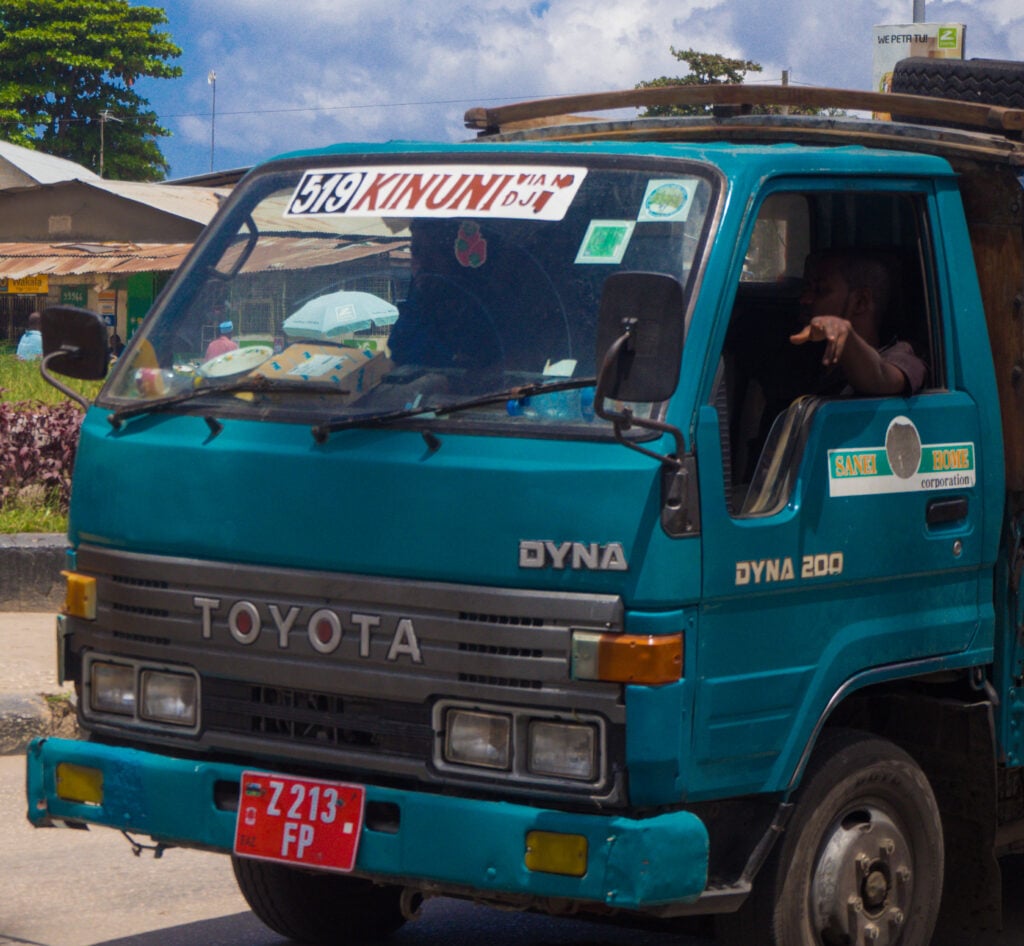
Leaving the city and heading to the beaches?
The general rule of thumb is that if you are going to the North or North-East, you will be looking for the Darajani terminus which is next to the GapCo petrol station. For those looking to head South or to the South-East, you will need to first find your way to the Mwanakwerekwe bus station which is approximately 5km outside of Old Stone Town, and which takes around 15-20 minutes by Dala-Dala. Of course, there is an exception, which is the thin sliver of land south of Stone Town between the coast and the airport – this is served by various routes from both Mwanakwerekwe and Darajani.
On our map, there are three routes indicated with thick grey lines – the sole reason for this is that there are so many vehicles and slight route variations that it is currently impossible in the current format to indicate each and every Dala-Dala journey between the Stone Town area, the Magogoni area (Amaan Stadium) and Mwanakwerekwe.
The place names displayed on the Dala-Dalas are useful if you are planning on traveling to one of those final stops, but not so much if your destination is somewhere in between the places displayed!
We’ve been pulling together a ton of information recently to clear up some of the mystery of how to get to some of the more popular destinations such as Kendwa or Paje when there never seems to be any Dala-Dalas with those places listed! (Spoiler: for Kendwa, use a Nungwi Dala-Dala, for Paje look for Michamvi or Jambiani). To our knowledge there has never previously been any kind of route map for Dala-Dalas, so after a few days of going cross-eyed staring at numbers and place names, and the frenzied yelling of those same place names still ringing in our ears, we are happy to present to you what we hope is a useful transport map to find your way around Zanzibar.
It is likely that one or two Dala-Dala routes may have not been recorded, but we will continue to update this map as new information is uncovered. If you notice any details that need correcting or see some details that do not seem to be covered then please get in touch with us and let us know!
Dala-Dala map
We’ve been pulling together a ton of information recently to clear up some of the mystery of how to get to some of the more popular destinations such as Kendwa or Paje when there never seems to be any Dala-Dalas with those places listed! (Spoiler: for Kendwa, use a Nungwi Dala-Dala, for Paje look for Michamvi or Jambiani). To our knowledge there has never previously been any kind of route map for Dala-Dalas, so after a few days of going cross-eyed staring at numbers and place names, and the frenzied yelling of those same place names still ringing in our ears, we are happy to present to you what we hope is a useful transport map to find your way around Zanzibar.
Rather take a taxi?
Looking for more comfort or not in an adventurous mood? Get in touch for fair taxi prices with careful drivers, air-conditioned and insured cars.



